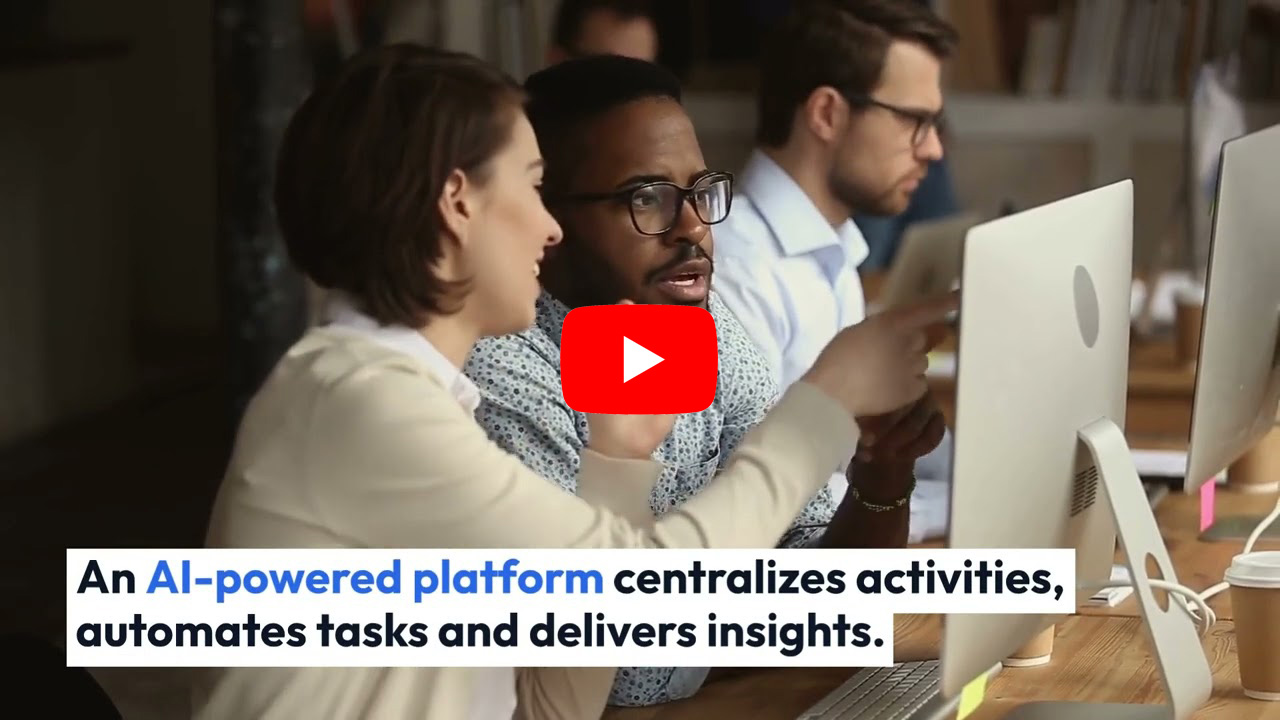
Total Procurement Orchestration: What, Why and How
- Orchestration enables synchronization of every process within the intake and source-to-pay continuum, increasing efficiency, transparency and collaboration across the procurement lifecycle.
- Unified low-code platform powered by Generative AI enables flexible workflows and rapid configuration, simplifying sourcing and buying for users within and outside the organization.
- Procurement can become a value orchestrator and go beyond cost-cutting.
May 23, 2024 | Procurement Software 4 minutes read
Procurement has reached the next stage of its evolution and is going through a creative disruption.
It’s a quantum leap in a way, as procurement sheds its old, siloed ways and achieves end-to-end flow in the intake-driven budget-to-pay process that organizations could once only aspire for, but never actually achieve.
Now, they can, and it has been made possible with AI-powered procurement orchestration, where different parts of the process are harmonized, organically.
Orchestration is not a new concept. It has been around in supply chain management for more than a decade. But total orchestration was never accomplished in supply chains because of siloed processes even if an organization had widely implemented the latest software solutions.
But now, because of advances in artificial intelligence (especially generative AI), automation, and low-code platforms, procurement is ready to take the driver’s seat in orchestrating the end-to-end process.
Why Is It an Important Moment in Procurement Evolution?
By 2027, 40% of sourcing events are likely to be executed by non-procurement staff, predicts analyst firm Gartner. This means that procurement’s role is going to significantly change, and companies need to be prepared.
To understand this future that procurement is entering, let’s look at how procurement software has evolved in the past two decades.
Procurement software started from point solutions such as contract life cycle management and spend management. Over time, the point solutions were integrated and became source-to-pay suites as we know and use them today.
These suites centralized the buying process, creating a hierarchy – there is a central authority at the top. Also, they require extensive coding to integrate and/or update the components. Often, there is a lack of alignment and synchronization between processes and tasks. Cycle times remain long and achieving compliance is complicated.
How Does Orchestration Solve These Issues?
Procurement orchestration is the synchronization of different business functions leading to a user experience unlike anything before. Not only does it enable the exchange of information between the parts but it does so harmoniously. It’s automated and centralized across the source-to-pay process.
So, there is no real center. Information and tasks flow seamlessly and frictionlessly without any hierarchy. Because, instead of one control tower (or one commander), there are many control towers and they work in symphony. This democratizes insights and decision-making because the entire system is optimized.
Since procurement has a customer service-type role with internal stakeholders, orchestration ensures that all of them can work with the suppliers they need through an intuitive user interface, flexibility and visibility. These stakeholders include procurement analysts, sourcing managers, supplier administrators, accounts payable teams, warehouse supervisors and legal counsels.
The Sudden Computing Revolution
Until recently it was not possible for procurement to achieve this level of flow because the technology was simply not mature enough to deliver this experience.
Now, with generative AI leading the charge, along with the ease of low-code/no-code platforms and the scalability of cloud services, seamless orchestration has become possible. Our current computing capabilities make procurement composable, where components can be put together in different combinations, like Lego blocks.
AI is fundamental for orchestration. It’s a centralized capability in the system that constantly monitors, computes, absorbs and provides information.
You also need a unified AI-powered source-to-pay platform for total orchestration. Unification enables your functions to work together, and the new computing power and AI bring orchestration to life.
Why Orchestration Goes Beyond Integration & Convergence
Source-to-pay suites are highly integrated where various systems are closely connected. But for total procurement orchestration, you need convergence — functions, processes and systems coming together to create a flow. Next comes alignment, synchronization and orchestration.
What Is the Outcome of Orchestration?
Orchestration makes procurement a value orchestrator; it goes beyond cost management. Procurement can work with suppliers and bring the best from the supply side into the business, improve risk management and sustainability, and drive innovation. This way, procurement not only becomes a streamlined process, but it elevates the user experience.
This is how orchestration transforms the user experience:
1. Automated intake caters to diverse user requests
2. Users are guided along the way and the navigation becomes easy
3. A flexible, configurable workflow provides extensibility and scalability, especially for rapidly growing companies
4. Cross‐functional information is shared effectively between all stakeholders inside and outside the organization
5. With procurement synchronization across functions, there is real-time visibility into how a task is moving forward
Orchestrate your entire procurement process with GEP’s AI-powered, low-code engine.




